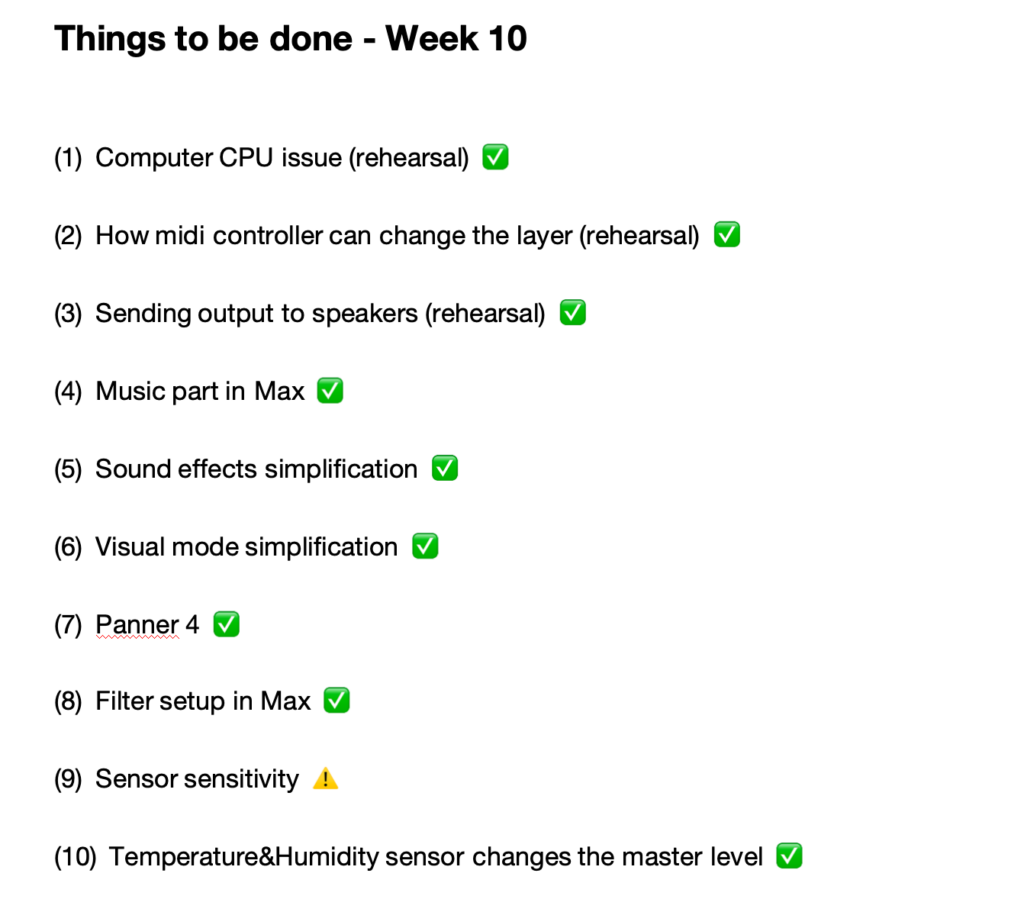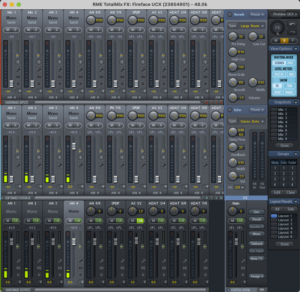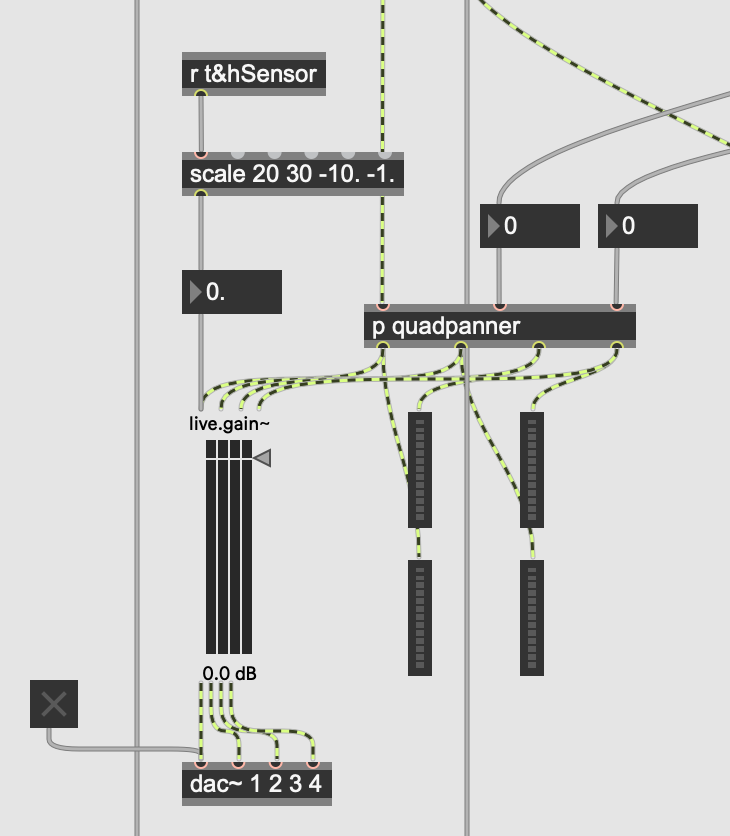This week I mainly improve the project based on the “Things to be done” in Week 10 summarized last week. On Thursday, Leo and I had an in-depth discussion on the contents of all the software and ended up solving three problems: determining the number of panners, setting the filter in the Max patch, and using the temperature sensor to control master level.

The first is the panner aspect. Given the portability and duration of our on-site setup, we found 4 speakers to be the most suitable. It can not only make the entire installation feel immersive, but also avoid problems such as errors or insufficient equipment due to over complexity to a certain extent. Correspondingly, the positions of the four speakers in the Max patch are determined as the four points A, B, C, and D of the pictslider (see Figure 1). At the same time, the settings in the Totalmix software bundled with the FireFace UCX sound card are to output the four channels to the corresponding four speakers (see Figure 2).

Figure 1: Pictslider in Max Patch.

Figure 2: Totalmix setup.
The second is the filter setting in Max. The purpose of this filter is to allow users to experience changes in sound frequency by interacting with the humidity sensor. After Leo’s guidance, I discovered that the cascade~ object can implement audio filter changes. With the filtergraph~ object, the cutoff frequency can be changed by the value received by the sensor (see Figure 3).

Figure 3: Filter Part in Max Patch.
Finally is the master level part. This extra step is taken into account that when there are more people in the environment, the sound level will correspondingly increase, which may cause some people to be unable to hear the sounds in the installation. At this time, we need to increase the overall volume to improve this. However, manual adjustments on site will greatly affect the user’s sense of immersion and personal experience. I later thought that the number of people in the environment is closely related to the temperature in the environment, so the less obvious temperature value in the temperature&humidity sensor can be used to control the master level, thus realizing the operation of adjusting the total volume invisibly according to the on-site environmental conditions. That is, the more people there are, the higher the temperature, and the greater the master level of the installation.
I had never thought of how to output four channels of sound before. Leo helped me solve this problem: dac~ object can directly output the desired number of tracks. I thought that I could use the live.gain~ object set to four channels to connect it to the panner and dac~ object to achieve master level control (see Figure 4).

Figure 4: Master Level Part in Max Patch.
This Saturday, we negotiated with other groups and successfully borrowed the right to use Atrium for two hours. So we had our last rehearsal in the Atrium (see Video 1).
Video 1: A Video Showing the Installation Setup for the Final Rehearsal.
There were no problems with hardware device connections and most software settings during the rehearsal process. However, the problem of sensor sensitivity was not successfully solved this week (see Video 2).
Video 2: A Video Showing the Sensor’s Lack of Sensitivity.
So I made an appointment with Joe to meet before the official demonstration next Wednesday to focus on the sensor sensitivity issue. Hopefully this last question before the final presentation will be ironed out next week!

